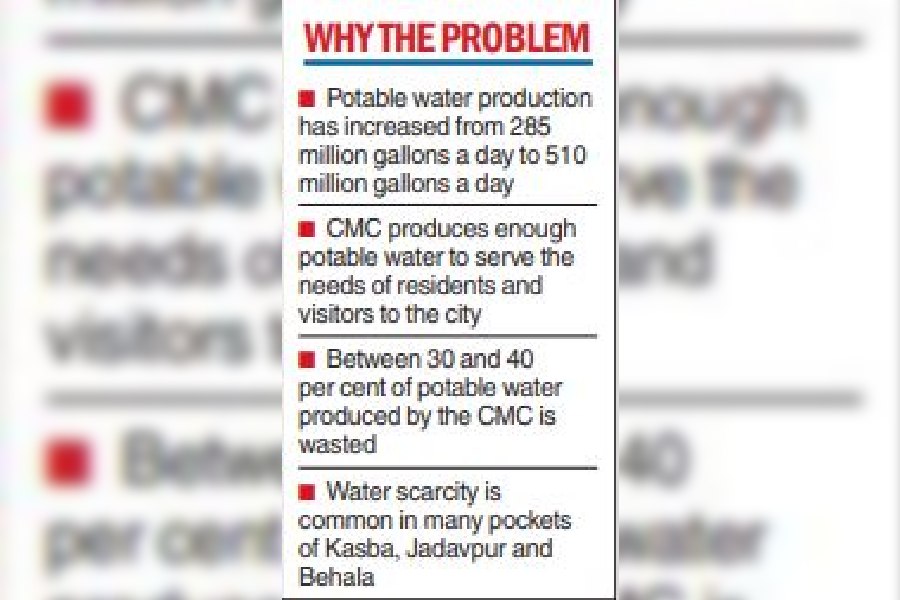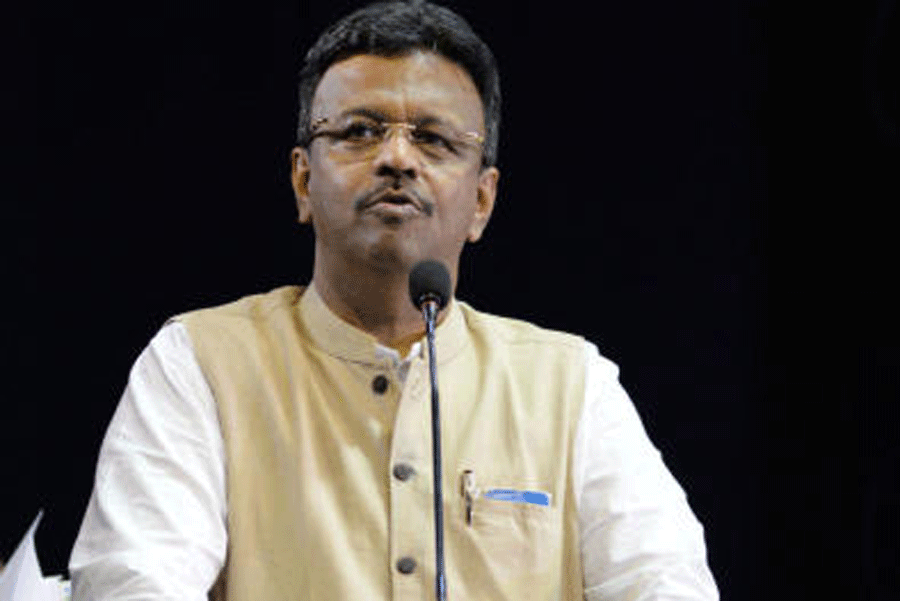Scarcity of potable water in the city will not end unless wastage is cut down, mayor Firhad Hakim said at the civic house on Saturday.
“Unless we are able to cut down water wastage, the problem will not end,” he said. “We may go on increasing production, but that will not solve the problem.”
Hakim, who was replying to a question on depleting groundwater levels in the city, said the Kolkata Municipal Corporation (KMC) produced enough potable water to serve the needs of the residents as well as those who visit the city during the day for work.
He said between 30 and 40 per cent of the total potable water produced in the city is wasted.
Complaints of water scarcity emerge from various pockets of the city every year, especially during the summer months.
The demand-supply mismatch is more acutely felt in parts of southeast Kolkata, Kasba, Jadavpur and Behala. Many pockets in these areas survive on groundwater drawn by pumps and distributed to homes.

The mushrooming of large housing complexes and standalone apartment buildings across these areas has further aggravated the problem. Many of the apartment blocks use pumps to draw groundwater.
Hakim made the comment on the need to check water wastage while replying to a councillor’s query on the receding groundwater level. One reason for the depletion is unchecked extraction of groundwater.
A senior KMC official blamed the water wastage on the civic body’s inability to monitor consumption by households. “Water overflowing from overhead reservoirs of standalone homes and apartment buildings is a common sight across the city. We will arrive at a staggering figure if we add the volume of wastage in each building,” the official said.
“Since the KMC does not install water meters in houses, there is no way the civic authorities can estimate how much water is wasted.”
Another reason for wastage, officials said, is leakage in the water supply network. Air valves in conduits along many roads are another source of potable water wastage.
The air valves maintain the air pressure inside underground water supply lines.
The mayor, too, said preventing wastage of water is a big challenge.
The mayor pointed out that the production of potable water in the city has increased from 285 million gallons a day to 510 million gallons a day in the past decade. Yet this has failed to meet the demand. This is because of the wastage. “Between 30 and 40 per cent of the water that is produced by the KMC goes to waste,” he said.
A KMC official said that if there were water meters in all households in Kolkata, the civic body could have monitored the wastage and penalised those found to be wasting potable water.
The manual on water prepared by the Central Public Health and Environmental Engineering Organisation (CPHEEO), which is followed across the country, says the water requirement of one person should not exceed 150 litres a day, said the KMC official.
“If there were water meters, we could have imposed penalties on those households that consume more than 150 litres of water a day per person,” the official said.






